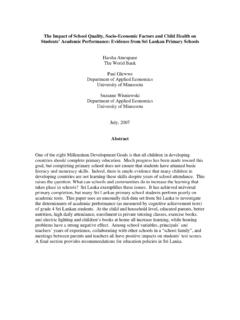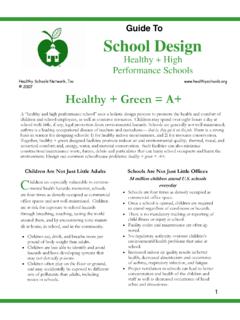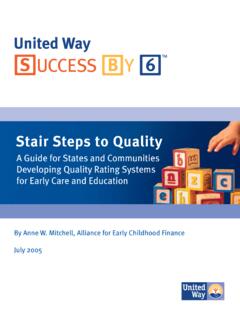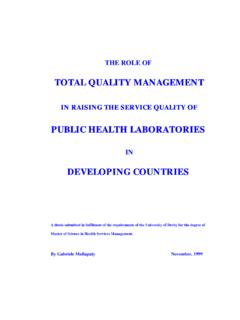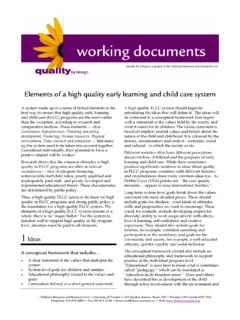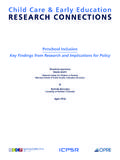Transcription of Developing a Program: Infrastructure and Planning …
1 VIRGINIA school HEALTH GUIDELINES 29. Developing a Program: Infrastructure and Planning Process Steps Overview Introduction. As described in school & Health: Our Nation's Investment,31 the vision of a comprehensive school health program (CSHP) can seem daunting and out of reach. However, this vision may be closer in reality than might be perceived. Many components of the Infrastructure that are needed to support CSHPs the basic underlying framework of policies, financial and human resources, organizational structures, and communication channels that will be needed for program to become established and grow already exist or are emerging.
2 Nationally, as reported in Coordinated school Health Program Infrastructure Development: Process Evaluation Manual, 32 all eight components are represented in state education agencies and are present to some extent in local school districts and agencies and in most schools. They are represented to some degree in state and local health agencies. However, according to CDC, the components are seldom well planned or coordinated within state and local educational agencies or with comparable programs in state or local health agencies. In Virginia, according to the legislative study Findings and Recommendations of the Blue Ribbon Commission on school Health, 26 all school divisions offer some portion of a school health program.
3 The Commission found that there is virtually no success difference in school health program components by school type ( , elementary, middle, and secondary schools) and regions of the state, with the exception of health promotion for staff. That is, elementary schools did not necessarily report greater success in accomplishing school health services goals than secondary schools. Furthermore, the Commission reported that school respondents rated meeting the goals of each component of a school health program as follows: High success group: health services, healthful school environment, psychological and social services, nutrition services, health promotion for staff, and physical education.
4 Middle success group: school counseling. Low success group: health education and parent/community involvement. 31. Allensworth, D., Lawson, L., Nicholson, L., and Wyche. J. (1997). school & Health: Our Nation's Investment (p. 237). Washington, : National Academy Press. 32. Centers for Disease Control and Prevention. (1997). Coordinated school Health Program Infrastructure Development: Process Evaluation Manual ( p. 2). Atlanta: Department of Health and Human Services, Centers for Disease Control and Prevention. 30. Subsections The following two subsections summarize resources available at the national, state, and local levels and the Planning process steps that need to be done to build a school health program.
5 Infrastructure Planning Process Steps 30. VIRGINIA school HEALTH GUIDELINES 31. Infrastructure Building the Infrastructure for a school Health Program National Infrastructure . According to school & Health: Our Nation's Investment,33. there are many federal agencies that have developed programs to improve the health of children and adolescents. These programs can be a source of technical assistance and funding that states and local school districts can use to develop the Infrastructure to develop a school health program. Some of these agencies are listed below, including their Internet Web site address (URL).
6 Federal Programs and Funding Streams for school Health Agency/Internet Address Examples of Programs CDC, Division of Adolescent and school CSHP Infrastructure Demonstration Grants, Health (DASH) Adolescent and school Health Initiative school Health Program Finance Project Department of Agriculture school Lunch, school Breakfast, Special Milk, and Snack Programs Nutrition Education and Training Program Department of Education Title I of the Elementary and Secondary Education Act (ESEA). Title IV of ESEA, Safe and Drug-Free Schools Title XI of ESEA, Coordinated Services Projects Individuals with Disabilities Act (IDEA).
7 Department of Health and Human Medicaid Services, Health Care Financing Early Periodic Screening and Diagnosis and Administration (HCFA) Treatment (EPSDT) Program Child Health Insurance Programs Department of Health and Human MCH Title V State Block Grants Services: Maternal and Child Health National Resource Centers Bureau (MCHB) Healthy Schools, Healthy Communities Community and Migrant Health Centers Initiatives 33. Allensworth, D., Lawson, L., Nicholson, L., and Wyche. J. (Eds.). (1997). school & Health: Our Nation's Investment (pp. 237, 241-245).
8 Washington, : National Academy Press. 32. Furthermore, there are many national organizations that are involved in supporting school health programs. The scope of involvement is presented in the publication Creating An Agenda for school -Based Health Promotion: A Review of Selected Reports, published by the Harvard school of Public Health (Lavin et al., 1992). In addition, there are many nonprofit and philanthropic organizations that support school health programs. Some of these organizations are listed below, including their Internet Web site address (URL).
9 National Organizations Supporting school Health Programs Organization/Internet Address Description American Academy of Pediatrics The AAP and its member pediatricians dedicate their (AAP) efforts and resources to the health, safety and well- being of infants, children, adolescents, and young adults. American Cancer Society, Health for It is the American Cancer Society's goal to eliminate Success cancer as a major health problem. The Society has determined that strengthening school health education is the best and most economic way to fight this devastating disease.
10 American school Health Association The ASHA promotes comprehensive and coordinated (ASHA) school health programs comprising health services, health education, and a healthful school environment. Association of State and Territorial The mission of ASTHO is to formulate and influence Health Officials (ASTHO) sound national health policy and to assist state health departments in the development and implementation of programs and policies to promote health and prevent disease. National Association of school Nurses The mission of the NASN is to advance the practice of (NASN) school nursing and provide leadership in the delivery of quality health programs to the school community.










